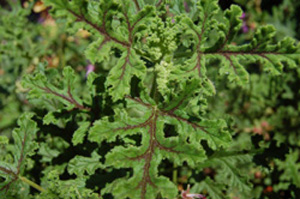 |
The Heirloom Garden, surrounding the National
Museum of American History, Behring Center, has a variety of plants
that highlight the types that have been passed down from generation
to generation.
Here are a few that are in bloom during the fall months.
 |
Anemone x hybrida ‘Queen Charlotte’ (1907)
Japanese anemone
Introduced to American gardens in Biltmore, NC, ‘Queen Charlotte’
anemone was called ‘Konigin Charlotte’ when it was first introduced
in Germany in 1898 (Pfitzer). One hundred years later, Charlotte
is still queen of the American fall garden when her cottony
bud clusters open into semi-double, silvery pink petals.
|
 |
Asclepias tuberosa (1690)
Butterfly weed
In addition to a long season of warm orange blooms, the seed
pods add beauty to the late summer and fall garden. Leaves
and pods are also food source for monarch butterfly caterpillars
and milkweed bugs (see What’s Blooming—Summer for additional
information on butterfly weed).
|
 |
Cleome hassleriana ‘Rose Queen’ (1800’s)
Rose queen spider-flower
George Washington and Thomas Jefferson both grew this exotic
South American annual. The cultivated variety ‘Rose Queen’
is listed in an 1836 seed catalog and is still offered in
many seed catalogs today. Seed pods and stamens appear like
wispy whiskers that add a delicate effect to a reliable bloomer
of rose buds which open into fluffy light-pink petals which
present a two-tone effect.
|
 |
Myosotis palustris (1800’s)
True forget-me-not
Medieval lore tells of a knight picking myosotis flowers along
a river bank fell into the water and drowned due to his heavy
suit of armor. But before he went under, the quick thinking
knight threw the bouquet of baby blue flowers to his lover
and proclaimed “Forget-me-not”. The language of flowers in
15th century Germany encouraged folks to wear myosotis so
that they would not be forgotten by their loved ones and to
signify faithfulness. The flower itself is unforgettable both
for its color and its charming ability to spread itself around
in the sweetest little places.
|
 |
Nicotiana alata ‘Lime Green’ (pre-1950)
Lime green tobacco
Native to Brazil, Nicotiana alata was introduced into English
garden cultivation in 1829 and into America gardens in 1889.
Visitors to the Heirloom Garden this summer were often surprised
at the flower’s unusual apple-green color, and that Nicotiana
alata is an ornamental tobacco.
|
 |
Ocimum basilicum ‘Lettuce Leaf’
(pre-1880’s)
Lettuce leaf basil
This basil was included in Vilmorin’s 1885 The Vegetable Garden
Manual which is sold in modern reprint today. Today, ‘Lettuce
Leaf’ basil is also still popular for its large leaves that
are ideal for making pesto. In the Heirloom Garden, plants
have worked non-stop all summer to produce vivid green, fragrant
leaves that add course textural contrast to many other garden
plants. And, the bees LOVE the tiny white flowers.
|
 |
Pelargonium
Scent or Scented geranium
“Scenteds” were introduced to Europe from South Africa
in about 1632 by John Tradescan (gardener to Charles I), but
the plants became most popular during the Victorian era (1837-1901)
for the heavenly scents they come in and easy cultivation
under conservatory conditions. Reportedly, there were up to
150 cultivars listed in some of the nursery catalogs back
then. Oil from the geranium now called ‘Attar of Roses’ was
used as a cheap substitute for the fashionable perfume “attar
of rose”, so numerous British plantations popped up in South
Africa to cash in on Victorian demand.
Meanwhile in America (by the 1830’s), scented geraniums
became a trendy house or porch plant. But because of the
plants’ connection to the overly ornate Victorians, this
group of plants eventually lost popularity. American trends
began looking for simpler and more relaxed gardens. One
hundred years later, scented geraniums were scarcely noted
in herbal literature. However today, the plants are regaining
popularity mainly for use of foliage to add texture, color,
and scent to the garden and landscape bedding. Scenteds
can also be used in the kitchen to flavor baked goods, jellies,
perfumes, and potpourris. Cultivated variety names like
‘Lemon Rose’, ‘Nutmeg’, and ‘Peppermint’ describe the many
aroma similarities that geraniums have to other plants.
Some enthusiasts collect scenteds solely for this reason.
This year, the Heirloom Garden features Pelargonium quercifolium
‘Fair Ellen’; an oak leaf form with purple-brown venation,
Pelargonium tomentosum; a peppermint-scent geranium, and
Pelargonium graveolens ‘Lady Plymouth’; rose-scent foliage
splotched with cream variegation.
|
 |
Petunia integrifolia (1831 in England)
Violet flower
Petunia hybrids today are descended frothis extraordinarily
beautiful violet petunia and from co-parent Petunia axillaris
which is also an old-fashion garden favorite. Petunia integrifolia
is native of Argentina. Some of the visitors to the Garden
this summer found it hard to imagine why breaders tried to
improve this pretty petunia.
|
 |
Solenostemon (Coleus) scutellarioides
Coleus hybrids
In Victorian United States and Europe, circular designs
were often cut into the lawn and featured simple to intricate
interior shapes filled with flowers or foliage. Garden writers
cautioned that maintaining such beds could be expensive
and that home owners with smaller properties should limit
the size and complexity of such bedding schemes. Coleus
were a very important plant to include in these plantings,
particularly in the subtropical garden.
This year, the garden featured one of the earliest Coleus
hybrids called ‘Sparkler’ (1880, England). Sparkler is still
available through specialty mail-order nurseries.
|
|
 |

